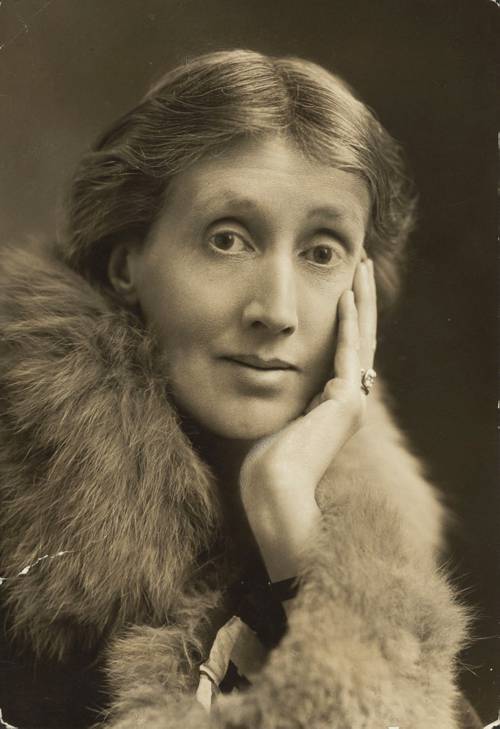
FAQ About Virginia Woolf

Who was Virginia Woolf?
Virginia Woolf was an influential English writer born on January 25, 1882, in London. She is best known for her modernist novels, essays, and contributions to the literary landscape in the early 20th century. Her works include 'Mrs. Dalloway', 'To the Lighthouse', and 'Orlando'. Woolf's innovative narrative techniques and her exploration of the inner thoughts and experiences of her characters helped establish her as a central figure in modernist literature.

What are some of Virginia Woolf's most famous works?
Some of Virginia Woolf's most notable works include 'Mrs. Dalloway' (1925), 'To the Lighthouse' (1927), and 'Orlando' (1928). These novels are lauded for their experimental structures and deep psychological insights. Additionally, Woolf wrote significant essays, such as 'A Room of One's Own' (1929), which discusses the challenges women writers face in a male-dominated literary world.

What themes are commonly found in Virginia Woolf's writings?
Virginia Woolf's writings frequently explore themes of time, memory, individual consciousness, and the fluidity of identity. Her work often examines gender roles and the challenges faced by women in society. Furthermore, Woolf was interested in the complexity of human relationships and the inner lives of her characters, often employing stream-of-consciousness techniques to convey these themes.

Why is Virginia Woolf considered a pioneer in modernist literature?
Virginia Woolf is considered a pioneer in modernist literature due to her innovative narrative techniques, such as the stream-of-consciousness style, which offered new ways to explore characters' inner thoughts and feelings. Her focus on subjective experience, psychological depth, and narrative experimentation helped to redefine the boundaries of the novel. Woolf's works challenged traditional storytelling methods and greatly influenced the development of 20th-century literature.

What is Virginia Woolf's 'stream of consciousness' technique?
The 'stream of consciousness' technique employed by Virginia Woolf is a narrative style that attempts to capture the continuous flow of a character's thoughts and feelings. By using this technique, Woolf allows readers to delve into the internal experiences of her characters, creating a more intimate and immediate sense of their mental and emotional landscapes. This approach was groundbreaking at the time and remains influential in literary studies.

How did Virginia Woolf influence feminist literature?
Virginia Woolf had a significant influence on feminist literature, particularly through her powerful essays like 'A Room of One's Own'. In this essay, she argued for the need for women to have financial independence and personal space to write and create fiction. Woolf highlighted the systemic barriers women faced in literature and society, sparking important discussions about gender equality in creative fields. Her work continues to inspire feminist discourse and literature today.

What was the Bloomsbury Group and Virginia Woolf's role in it?
The Bloomsbury Group was an influential collective of English writers, intellectuals, philosophers, and artists who lived in the Bloomsbury area of London during the early 20th century. Virginia Woolf, along with her sister Vanessa Bell and other notable figures like economist John Maynard Keynes and writer E.M. Forster, was a prominent member. The group was known for its progressive ideas on art, literature, and society, many of which were reflected in Woolf's writings.

What is the significance of 'A Room of One's Own' by Virginia Woolf?
'A Room of One's Own' is an extended essay by Virginia Woolf, published in 1929. The work is renowned for its advocacy of financial independence and private space as essential conditions for women's artistic creation. Woolf uses the metaphor of having "a room of one's own" to highlight women's historical lack of educational and economic opportunities, arguing that this has inhibited their literary contributions. The essay is considered a foundational text in feminist literary criticism.

Was Virginia Woolf married, and did she have a family?
Yes, Virginia Woolf was married to Leonard Woolf, a writer and political theorist. They married in 1912 and together founded the Hogarth Press, which published much of her work as well as the works of other notable authors. The couple did not have children, but Leonard was a significant support in Virginia's life, especially regarding her writing career and struggles with mental health.

Did Virginia Woolf struggle with mental health issues?
Yes, Virginia Woolf struggled with mental health issues throughout her life, experiencing periods of severe depression and bipolar disorder. Despite her mental health challenges, she remained a productive and innovative writer. Her battles with mental illness are often reflected in the themes of her work, where she delicately explores the intricacies of human psychology and emotional experience. Tragically, Woolf's struggle with mental health led to her suicide in 1941.

How did Virginia Woolf die?
Virginia Woolf died by suicide on March 28, 1941. She drowned herself in the River Ouse near her home in Sussex. Woolf left behind a poignant note to her husband, Leonard, expressing her love and the belief that her mental illness would be too difficult for them both. Her death was a great loss to the literary world, but her legacy continues through her influential and enduring body of work.

What impact did Virginia Woolf's work have on literature?
Virginia Woolf's work had a profound impact on literature by pushing the boundaries of narrative form and psychological depth. Her pioneering use of stream-of-consciousness and focus on the complexities of inner experience significantly shaped modernist literature. Woolf's exploration of themes like gender, societal roles, and identity has also influenced feminist literary criticism. Her innovative novels and essays continue to be studied and admired for their artistic and intellectual contributions.

What is 'Mrs. Dalloway' about?
'Mrs. Dalloway', published in 1925, is one of Virginia Woolf's most famous novels. The story takes place over a single day in London and follows Clarissa Dalloway, a high-society woman, as she prepares for a party. The novel explores themes of time, memory, and existential questioning, often contrasting Clarissa's life with that of Septimus Warren Smith, a war veteran suffering from PTSD. Woolf's innovative use of stream-of-consciousness allows readers to delve deeply into the characters' minds.

Why did Virginia Woolf use pseudonyms for some of her works?
Virginia Woolf occasionally used pseudonyms in her early career to publish reviews and essays, primarily to protect her anonymity and perhaps to avoid gender bias. This was a common practice among female writers during her time, as it allowed them more freedom to express controversial opinions and gain publication opportunities. Eventually, her talent was recognized on its own merits, and her works were published under her real name.

How did Virginia Woolf contribute to the Hogarth Press?
Virginia Woolf co-founded the Hogarth Press with her husband Leonard Woolf in 1917. The press began as a small hand-printing operation and eventually became an influential publishing house. The Hogarth Press not only published Woolf's works but also introduced many important modernist and experimental writers, including T.S. Eliot and Katherine Mansfield. Virginia was deeply involved in editing and selecting the works to be published, contributing significantly to its success.

What is the legacy of Virginia Woolf?
Virginia Woolf's legacy is immense, marked by her innovative approaches to narrative structure and psychological depth in fiction. Her works continue to be celebrated for their literary artistry and have influenced countless writers and scholars. Woolf's emphasis on women's experiences and her contributions to feminist thought have made her an enduring figure in feminist literary criticism. Her novels and essays remain essential reading, offering insights into both the human condition and the evolving dynamics of 20th-century literature.

What inspired Virginia Woolf to write 'To the Lighthouse'?
'To the Lighthouse', published in 1927, was inspired by Virginia Woolf's own childhood experiences and her fond memories of summer vacations in St. Ives, Cornwall. The novel explores themes of family dynamics, the passage of time, and the search for meaning. Woolf used the setting of the lighthouse to symbolize aspirations, unattainable goals, and the complex interplay between personal desires and familial obligations. The book is considered one of her finest achievements.

Did Virginia Woolf write any biographies?
Yes, Virginia Woolf wrote several biographical works, including 'Flush: A Biography' (1933), which is an imaginative biography of Elizabeth Barrett Browning’s cocker spaniel, and 'Orlando: A Biography' (1928), which is a fictionalized biography of her friend Vita Sackville-West. Although 'Flush' and 'Orlando' incorporate fictional elements, they exhibit Woolf's interest in the biographical form and her innovative approach to storytelling.

What makes 'Orlando' a unique novel in Virginia Woolf's oeuvre?
'Orlando', published in 1928, is considered unique in Virginia Woolf's oeuvre due to its blend of historical fiction and fantasy, chronicling the life of its protagonist over several centuries. Orlando transforms from a man to a woman and defies conventional temporal boundaries, offering a humorous yet insightful commentary on gender and identity. The novel's playful structure and themes of fluidity and transformation set it apart from Woolf's other works.

How can I start reading Virginia Woolf's works if I'm new to her writing?
If you're new to Virginia Woolf, it's a good idea to start with some of her more accessible works. 'Mrs. Dalloway' and 'To the Lighthouse' are great starting points as they showcase her narrative style and thematic concerns. For those interested in her feminist perspectives, 'A Room of One's Own' provides clear insight into her thoughts on gender and creativity. Engaging with secondary resources such as documentaries or analyses can also aid in appreciating the depth of her work.
